As technology continues to advance, the appliances we use in our daily lives also evolve. One such appliance is the dryer, a crucial element in every household that helps us keep our clothes clean and fresh. In recent years, ventless dryers have been gaining popularity as an alternative to traditional vented dryers. In this article, we will delve into what ventless dryers are and how they work.
Ventless dryers are machines that do not require an external exhaust system to remove moist air from the dryer drum. Instead of venting hot air outside, these dryers use condensation technology to extract moisture from clothes and expel it in a liquid form through a drain or container. This process eliminates the need for vents and ducts while still achieving efficient drying results. Ventless dryers come in two types: heat pump and condenser models. Heat pump models utilize a refrigeration cycle to reclaim heat from humid air while condenser models recycle the warm air inside the drum by passing it through a heat exchanger before releasing it back into the drum. The benefits of ventless dryers include energy efficiency, cost savings, flexibility of installation, and space-saving design – making them ideal for apartments or homes with limited space.
The History Of Dryers And Ventless Technology
Imagine living in a world where laundry was still being done by hand, and clothes were hung up outside to dry. It wasn’t until the 18th century when the first mechanical drying devices were invented, allowing people to dry their clothes indoors. The evolution of dryers has come a long way since then, with significant improvements in technology and efficiency.
Dryers have come in two types of technology: ventless and vented. Vented dryers work by pulling in cool air from the room, heating it up with a coil, then blowing it through wet laundry to evaporate water. The hot air with moisture is then pushed outside through a venting duct to release into the atmosphere. Ventless dryers, on the other hand, don’t require an external venting system as they condense moisture from wet clothes inside the unit itself.
The first ventless dryer was introduced in Europe during the 1980s due to strict environmental regulations that prohibited using external vents for releasing moist air out of homes or apartments. However, it wasn’t until recently that ventless technology gained popularity in North America due to space constraints and energy efficiency concerns. In this section, we will dive deeper into what makes ventless dryers unique compared to traditional vented models.
What Makes Ventless Dryers Unique
Ventless dryers are a unique type of dryer that do not require an external venting system. This makes them a popular choice for those living in apartments or homes without access to exterior venting. In addition to their practicality, they also have the potential to save energy and reduce environmental impact.
One of the main advantages of ventless dryers is their energy efficiency. Because they do not require an external vent, they can be placed in almost any location within the home. This means less heat loss and easier temperature control during the drying process. Additionally, many models come equipped with advanced sensors that can detect when clothes are dry and automatically shut off, saving even more energy.
Another benefit of ventless dryers is their reduced environmental impact. Traditional vented dryers release hot air and moisture into the environment, which can contribute to climate change and other negative effects. Ventless dryers use condensation technology to collect and reuse this moisture, preventing it from entering the environment. This also means that there is no need for duct cleaning or maintenance, further reducing environmental impact.
Overall, ventless dryers are a unique and efficient option for those looking to reduce energy consumption and environmental impact. By using condensation technology to collect moisture and eliminate the need for external venting, these machines offer a convenient and sustainable alternative to traditional dryers. In the following section, we will explore how exactly these machines use condensation technology to achieve this goal.
How Ventless Dryers Use Condensation Technology
The condensation process in ventless dryers involves converting the warm moist air from the clothes into liquid form. Heat recovery is achieved by reusing the energy from the warm moist air for further drying of the clothes. Moisture removal is accomplished by condensed water being pumped out of the dryer and into the drainage system. Ventless dryers use a heat exchanger to transfer the heat from the moist air to the condenser where the water is collected. The condenser then releases the water into a drain or container. Ventless dryers use a fan to expel the dry air from the unit, while the condensate is removed through a pipe. The sophisticated technology of ventless dryers provides an efficient and economical way to dry clothes without requiring the use of an external vent.
Condensation Process
As a ventless dryer expert, it is essential to understand the condensation process that these dryers use. Unlike traditional dryers that vent hot and humid air outside, ventless dryers utilize a closed-loop system that recirculates hot air. This hot and humid air passes through a heat exchanger where it is cooled down, causing the moisture to condense into water droplets.
Once the moisture has condensed into water droplets, it needs to be removed from the dryer. Ventless dryers use a water collection mechanism to capture this condensed water. Some models have an internal tank that needs to be manually emptied after each drying cycle, while others have a drain hose that can be connected to a plumbing system for automatic draining.
The condensation process used by ventless dryers makes them an excellent option for those who live in small spaces or apartments where venting outside is not possible. Additionally, this process also means that there is no need for ductwork maintenance, making these machines more energy-efficient and cost-effective over time. As such, ventless dryers are an excellent investment for anyone looking for a convenient and efficient way to dry their clothes without the need for external ventilation.
Heat Recovery
Heat recovery is an essential element in the condensation technology used by ventless dryers. This process involves recirculating hot air that has already gone through the heat exchanger to recover energy and reduce power consumption. The recovered heat is then used to preheat the incoming air, which helps maintain high temperatures within the dryer without consuming more energy.
The use of heat recovery in ventless dryers is a significant contributor to reducing energy consumption. By recycling hot air and recovering its energy, these machines consume less energy compared to traditional vented dryers. As a result, they are more cost-effective and environmentally friendly over time.
In addition to being energy-efficient, ventless dryers with heat recovery also help prevent overheating in homes or apartments. The fact that they do not require external ventilation means that there is no risk of releasing hot, humid air into living spaces. Overall, heat recovery is a crucial component of ventless dryers as it contributes significantly to their efficiency and effectiveness while promoting environmental conservation and safety.
Moisture Removal
As an expert in ventless dryer technology, it is my duty to discuss the subtopic of moisture removal in these machines. Moisture removal is a crucial aspect of drying clothes effectively and efficiently. In condensation-based ventless dryers, moisture removal is achieved through a process that involves cooling the humid air within the machine using a heat exchanger. As the air cools, moisture condenses and collects in a reservoir while dry air is recirculated back into the drum to continue its drying cycle.
The efficiency of moisture removal determines how well ventless dryers perform their primary function of drying clothes. Effective moisture removal ensures that clothes come out of the dryer completely dry without any dampness or musty odors. It also contributes significantly to energy efficiency as less energy is required to remove moisture from clothes than to heat up more water vapor in the air.
Ventless dryers with efficient moisture removal systems offer several benefits to users. For one, they are ideal for use in small spaces such as apartments or closets since they do not require external ventilation. They also save on energy costs by consuming less power compared to traditional vented dryers while still delivering excellent drying results. Overall, efficient moisture removal is vital for ventless dryers’ performance and success in serving consumers’ needs effectively and efficiently.
The Different Types Of Ventless Dryers
Like a puzzle, ventless dryers come in different types and brands that fit various household needs. Each type has its unique features, advantages, and disadvantages. Understanding the differences between them can help you make an informed decision when purchasing one.
One of the most popular types of ventless dryers is the condenser model. As mentioned earlier, it works by removing moisture from clothes and then draining it into a tank or through a drain hose. The dryer heats up the air inside the drum, which consequently dries your clothes. Condenser dryers are more energy-efficient than traditional models but may require frequent cleaning to maintain optimal performance.
Another type of ventless dryer is the heat pump model. It uses advanced technology to extract moisture from clothes while using less energy than conventional dryers. Heat pump models do this by recirculating hot air through a heat exchanger instead of releasing it outside through a vent. However, they tend to be pricier than other models but can save you money in the long run due to their energy efficiency.
When considering buying a ventless dryer, it’s essential to choose one that fits your lifestyle and budget. Several reputable brands offer different types of dryers with varying features and capacities. Take time to research each brand’s reputation before making your final decision so that you can purchase a machine that will last for years without breaking down easily.
As we delve more into ventless dryers’ intricacies, we’ll explore further how heat pump vs. condenser models differ in terms of functionality and features. Understanding these differences will help you determine which type fits best with your household needs while keeping costs low and energy efficiency high.
Heat Pump Vs. Condenser Models
Heat pump and condenser models are two main types of ventless dryers available in the market. The heat pump model uses a heat exchanger to extract moisture from the air, which is then used to dry the clothes. This process ensures that the dryer is highly energy-efficient, as it recycles hot air instead of dispersing it outside. Heat pump efficiency is typically higher than condenser models due to its advanced technology.
On the other hand, condenser models use a different method for drying clothes. Instead of using a heat exchanger, they use hot air to dry clothes and collect moisture in a separate tank. Unlike heat pump models, condenser models require regular maintenance to ensure optimal performance. This includes cleaning the lint filter regularly and emptying the water tank after every cycle.
When considering which type of ventless dryer to purchase, it’s important to weigh up factors such as energy efficiency and maintenance requirements. Heat pump models may be more expensive upfront but can save on energy bills in the long run due to their high efficiency. Alternatively, condenser models may require more maintenance but can be a more affordable option for those on a budget.
Moving forward into how heat pump models work, it’s worth noting that they have become increasingly popular due to their eco-friendly design and cost-effectiveness over time.
How Heat Pump Models Work
Heat pump technology is a breakthrough in the world of drying clothes. It functions by absorbing moisture from clothes and then releasing hot, dry air to dry them, all while using minimal energy. This process takes place within a closed system that does not require any venting to the outside, making it ideal for apartments or homes where traditional vented dryers are impractical.
Heat pump models have been shown to reduce energy consumption by up to 60%, which translates into significant savings on utility bills. They do this by recycling and reusing the heat generated during the drying cycle. With their advanced sensors, they can detect when clothes are dry and automatically switch off, preventing over-drying and reducing wear-and-tear on fabrics.
Overall, heat pump technology has revolutionized the way we think about drying clothes. In terms of both convenience and efficiency, it outperforms traditional vented dryers in every aspect. Its ability to save energy while still delivering excellent results makes it an excellent choice for anyone looking to cut down on their carbon footprint without sacrificing quality. In the next section, we will delve into how condenser models work and compare them with heat pump models.
How Condenser Models Work
Condenser dryers are a popular alternative to vented dryers, especially in spaces where traditional venting is not possible. These dryers use a unique technology that allows them to operate without the need for a vent, making them ideal for apartments, condos, and other living spaces. Unlike vented models that expel hot air through a duct, condenser dryers collect the moisture from your clothes in a container or tank.
One of the main features of condenser dryers is their ability to remove moisture from your clothes using cool air. This means that they are gentler on fabrics than traditional models and can help prevent shrinking and damage. Additionally, many condenser models come with sensors that detect when your clothes are dry and automatically shut off the dryer, saving you energy and money on your utility bills.
To keep your condenser dryer running smoothly, it’s important to perform regular maintenance tasks. Some tips to follow include cleaning the lint filter after each use, checking the water container frequently for buildup or leaks, and wiping down the inside of the drum with a damp cloth. Additionally, be sure to avoid overloading your dryer with too many clothes at once as this can lead to decreased performance and longer drying times.
As you can see, condenser dryers offer several benefits over traditional vented models. From their gentle treatment of fabrics to their convenient maintenance options, they are an excellent choice for anyone looking for an efficient and reliable way to do laundry at home. In the next section, we will explore some key differences between ventless dryers like condensers and their vented counterparts.
Ventless Dryers Vs. Vented Dryers
Ventless dryers are a type of appliance that does not require an external exhaust vent for the release of air and moisture. This type of dryer has several advantages compared to vented dryers, such as energy efficiency and versatility. Vented dryers, on the other hand, consume more energy, require a vent and are limited in where they can be installed. The operating principle of a ventless dryer is condensation, which works by using a condenser to cool the hot and moist air. This air is then passed over a heat exchanger, where the moisture is condensed and collected in a water tank. The cooled air is then reheated and sent back into the dryer to repeat the process.
Advantages Of Ventless Dryers
One of the primary advantages of ventless dryers is that they do not require an external venting system. This makes them ideal for apartments, condos, and other living spaces where installing a vent would be difficult or impossible. Additionally, ventless dryers are often more energy-efficient than their vented counterparts. This is because they recirculate hot air within the drum, rather than expelling it outside. As a result, less heat is lost and less energy is required to maintain the desired temperature.
Another advantage of ventless dryers is that they tend to be gentler on clothes than vented dryers. This is because they use lower temperatures to dry clothes and do not subject them to the harsh blowing action that can occur in a vented dryer. As a result, clothes may last longer and retain their color and shape better when dried in a ventless dryer. Additionally, some models offer special features such as steam cleaning or delicate drying cycles that further enhance their ability to protect clothing.
Finally, ventless dryers are often more versatile than their vented counterparts. Many models can be installed in tight spaces such as closets or under countertops, making them ideal for smaller homes or apartments. Some even offer features like reversible doors that allow you to configure the dryer to suit your space. Additionally, because they do not require an external venting system, you have more flexibility in terms of where you can install them within your home.
In conclusion, while there are some disadvantages associated with using a ventless dryer (such as longer drying times), there are also many advantages that make them an attractive option for many homeowners. Ultimately, whether you choose a vented or a ventless dryer will depend on your specific needs and preferences – but if you’re looking for a machine that’s energy-efficient, gentle on clothes, and versatile enough to fit into almost any space, a ventless dryer may be the right choice for you.
Disadvantages Of Vented Dryers
When comparing ventless dryers to vented dryers, it is important to consider the disadvantages of the latter. One of the primary drawbacks of vented dryers is that they require an external venting system in order to expel hot air outside. This can be a challenge for those living in apartments or other spaces where installing a vent is not feasible. Additionally, because vented dryers release hot air outside, they are less energy-efficient than their ventless counterparts.
Another disadvantage of using a vented dryer is its negative environmental impact. The hot air expelled through the vent often contains pollutants and greenhouse gases, contributing to air pollution and climate change. Furthermore, because vented dryers use higher temperatures and more energy to dry clothes, they have a greater carbon footprint than their ventless counterparts.
Finally, using a vented dryer can lead to increased wear and tear on clothing due to the harsh blowing action that occurs during the drying process. This can cause fabrics to break down over time and fade in color. In contrast, ventless dryers use lower temperatures and gentler drying cycles that are less likely to damage clothing.
Overall, while there are advantages and disadvantages associated with both types of dryers, it is clear that ventless options offer several benefits over their vented counterparts. From increased energy efficiency and gentler drying cycles to more versatile installation options and reduced environmental impact, choosing a ventless dryer may be the best choice for those looking for an efficient and eco-friendly way to keep their clothes clean and fresh.
Operating Principles Of Ventless Dryers
When it comes to choosing between ventless and vented dryers, it is important to consider the operating principles of each. Ventless dryers work by condensing moisture from clothes into water that is then drained or collected in a tank. This eliminates the need for an external venting system, making them a safer option for homes that lack proper ventilation. Additionally, because they do not release hot air outside, they are much more eco-friendly than their vented counterparts.
Ventless dryer safety is another key advantage of these appliances. Because they do not require external venting, there is no risk of lint buildup or other hazards associated with clogged vents. This makes them ideal for small spaces like apartments or condos where safety and convenience are top priorities. Furthermore, since they use lower temperatures and gentler drying cycles than vented dryers, there is less risk of damage to clothing over time.
Finally, the eco-friendly features of ventless dryers make them a popular choice for those looking to reduce their carbon footprint and protect the environment. By using less energy and releasing fewer pollutants into the air, these appliances offer a more sustainable way to keep clothes clean and fresh. And with advances in technology driving greater efficiency and performance every year, it’s clear that ventless dryers will continue to be an important part of the laundry landscape for years to come.
The Benefits Of Ventless Dryers
Compared to their vented counterparts, ventless dryers offer several benefits that make them a popular choice for homeowners. They are more flexible and can be installed in any location since they don’t require an external venting system. This means that you can place them in small spaces such as closets or even under kitchen counters. Furthermore, since they recycle the air within the dryer, they do not produce any hot air or moisture, which is perfect for those living in humid areas.
Another benefit of ventless dryers is their efficiency. Since they use heat pump technology to dry clothes, they consume less energy than traditional vented dryers. This makes them an eco-friendly option that can help reduce your energy bills significantly. In fact, according to Energy Star ratings, ventless dryers use about 20-60% less energy than conventional models.
Overall, if you’re looking for a dryer that offers flexibility and energy efficiency, then a ventless dryer might be a great option for you. While they may come at a higher price point compared to their traditional counterparts, the long-term savings on your utility bills may offset this initial investment. Moreover, with several comparison options available in the market today, it’s easy to find one that meets your specific needs and budget. In the next section, we’ll take a closer look at how ventless dryers achieve energy efficiency and why it matters for homeowners today.
Energy Efficiency Of Ventless Dryers
The energy efficiency of ventless dryers is one of the key benefits that consumers enjoy. Unlike traditional dryers, ventless dryers do not expel hot air outside through a vent. Instead, they extract moisture from clothes and then use heat to evaporate the moisture within the machine before releasing it into the room. This process consumes less energy than their traditional counterparts.
Ventless dryers are designed to conserve energy by using heat pumps and sensors to regulate temperature and moisture levels during the drying process. The heat pump draws in cool air, heats it up, and then uses it to evaporate moisture from clothes. The sensors detect when clothes are dry and shut off the machine automatically, thereby preventing unnecessary energy consumption.
In summary, ventless dryers provide cost savings for consumers due to their efficient use of energy. They consume less electricity compared to traditional dryers as they do not require vents or ducts for installation. Additionally, their ability to sense when clothes are dry prevents over-drying which reduces wear-and-tear on clothing resulting in cost savings over time.
Cost Savings With Ventless Dryers
As we have discussed in the previous section, ventless dryers are a great option for those looking to save energy. Not only do they use less energy than traditional vented dryers, but they also offer cost savings over time. The initial investment in a ventless dryer may be slightly higher than a traditional dryer, but the long-term savings on energy bills make it worth considering.
In addition to the energy efficiency benefits of ventless dryers, there are also significant cost savings associated with them. Because they don’t require a ventilation system, installation costs are lower, and maintenance costs are reduced as well. Ventless dryers also tend to have longer lifespans than traditional dryers due to their more efficient operation.
Overall, the cost savings and energy efficiency benefits of ventless dryers make them an excellent choice for anyone looking to reduce their environmental impact while saving money. By choosing a ventless dryer, you’ll not only enjoy lower energy bills and reduced maintenance costs but also contribute to a more sustainable future for all of us. In the next section, we will explore another advantage of ventless dryers: their flexibility of installation.
Flexibility Of Installation
Installation flexibility is one of the most significant advantages of ventless dryers. Unlike traditional dryers that require an exhaust vent, ventless dryers can be installed anywhere in your home, as long as there’s an electrical outlet. This means you don’t have to worry about installing a bulky and expensive ventilation system, which can save you time and money.
Another great thing about ventless dryers is their compact design, which makes them perfect for small living spaces. Most models are designed to fit into tight spaces such as closets or under countertops, so they won’t take up too much room. This space-saving design also makes it easier to install the dryer in areas where traditional dryers wouldn’t fit.
When it comes to installation flexibility, ventless dryers are the way to go. Here are some benefits of this type of dryer:
- No need for a ventilation system: With no need for a ventilation system, you don’t have to worry about installing ducts or cutting holes in walls.
- Easy installation: Ventless dryers are easy to install since they only require an electrical outlet.
- Can be placed anywhere: Due to their small size and lack of ventilation requirements, you can place ventless dryers anywhere in your home.
With these advantages in mind, it’s easy to see why more and more people are opting for ventless dryers over traditional ones. In the next section, we will explore how their space-saving design further adds value to your investment.
Space-Saving Design
Like a magician’s hat, ventless dryers pack a lot of power into a small space. These machines are the perfect solution for those living in compact living arrangements. The space-saving design of a ventless dryer allows it to fit in tight spaces without compromising on performance.
Space saving solutions have become increasingly important as more people opt for smaller homes and apartments. In such cases, homeowners seek ways to maximize the limited space available. Ventless dryers are an excellent option for those who want to do laundry at home but do not have the room for a traditional dryer with vents. They require no external venting and can be installed in almost any location, including closets, kitchens, and bathrooms.
The compact size of ventless dryers does not compromise their efficiency. In fact, these machines use advanced technology that allows them to dry clothes quickly and effectively while using less energy than traditional dryers. With proper usage and maintenance, ventless dryers can serve homeowners well for years to come. In the next section, we will discuss some maintenance and cleaning tips that will help keep your machine running efficiently.
Maintenance And Cleaning Tips
As we have discussed in the previous section, ventless dryers are designed to save space without sacrificing functionality. These types of dryers do not require an external vent to function properly, making them a popular option for apartments and small homes. But how do they work?
Ventless dryers use a condenser to extract moisture from the clothes and convert it into water. This water is then collected in a reservoir that needs to be emptied periodically. The dryer then uses heat exchangers to recycle the air and reheat it before releasing it back into the drum.
To keep your ventless dryer functioning properly, regular maintenance and cleaning are essential. Cleaning frequency depends on usage, but it’s recommended to clean the lint filter after every cycle and deep clean the dryer at least twice a year. Use recommended products such as fabric softener sheets or dryer balls to avoid damaging the machine.
Common maintenance issues with ventless dryers include clogged filters or hoses, faulty sensors, or malfunctioning heating elements. Troubleshooting tips include checking for blockages in the hoses or filters, ensuring proper installation and ventilation, and consulting the user manual for specific solutions.
Incorporating these maintenance tips can prolong the lifespan of your ventless dryer and prevent costly repairs down the line. Now that we understand how ventless dryers work and how to care for them properly let’s move on to choosing the right one for your home.
Choosing The Right Ventless Dryer For Your Home
When it comes to choosing the right ventless dryer for your home, there are a few key features to consider. First and foremost, ventless dryers offer an innovative technology that eliminates the need for an external venting system. This means that you can install these dryers virtually anywhere in your home without the hassle of having to connect them to a vent.
One of the main benefits of ventless technology is that it allows for greater flexibility in terms of where you can install your dryer. Whether you have a small apartment or a large house, a ventless dryer can fit seamlessly into your living space. Plus, because they don’t require an external vent, they are also more energy-efficient than traditional dryers.
Another important feature to look for when choosing a ventless dryer is its capacity. While many models offer similar capacities to traditional dryers, some may have smaller drums or be more compact overall. It’s important to choose a model with enough capacity for your needs so that you don’t have to run multiple loads of laundry every day.
Ultimately, whether you’re looking for an eco-friendly option or simply want more flexibility in terms of where you can install your dryer, a ventless model may be the perfect choice for your household. With their advanced technology and numerous benefits, these dryers are quickly becoming a popular choice among homeowners everywhere.
Conclusion
Dryers have come a long way since their inception, and ventless technology has been an important development in the field. Ventless dryers use condensation technology to extract moisture from clothes and release it as water instead of hot air. This makes them a great option for those who don’t have access to traditional venting systems or who want a more energy-efficient option.
When choosing a ventless dryer, it’s important to consider factors like space-saving design, flexibility of installation, and maintenance requirements. Heat pump models are more efficient but tend to be pricier than condenser models. Keeping your dryer clean and well-maintained is essential for optimal performance and longevity. Overall, ventless dryers offer a practical solution for those seeking an alternative to traditional dryer systems.
As the saying goes, “there’s more than one way to skin a cat,” and the same can be said for drying clothes. Ventless dryers offer a unique solution for those seeking an energy-efficient, space-saving option that doesn’t require traditional venting systems. With their innovative condensation technology, these dryers are changing the game in the world of laundry appliances. From heat pump models to condenser options, there are plenty of choices available for consumers looking to make the switch. By considering factors like installation requirements and maintenance needs, you can choose the best ventless dryer for your home and enjoy its many benefits for years to come.
Image Credits
- “a black and white photo of a woman getting her hair cut” by Emma Ou (featured)

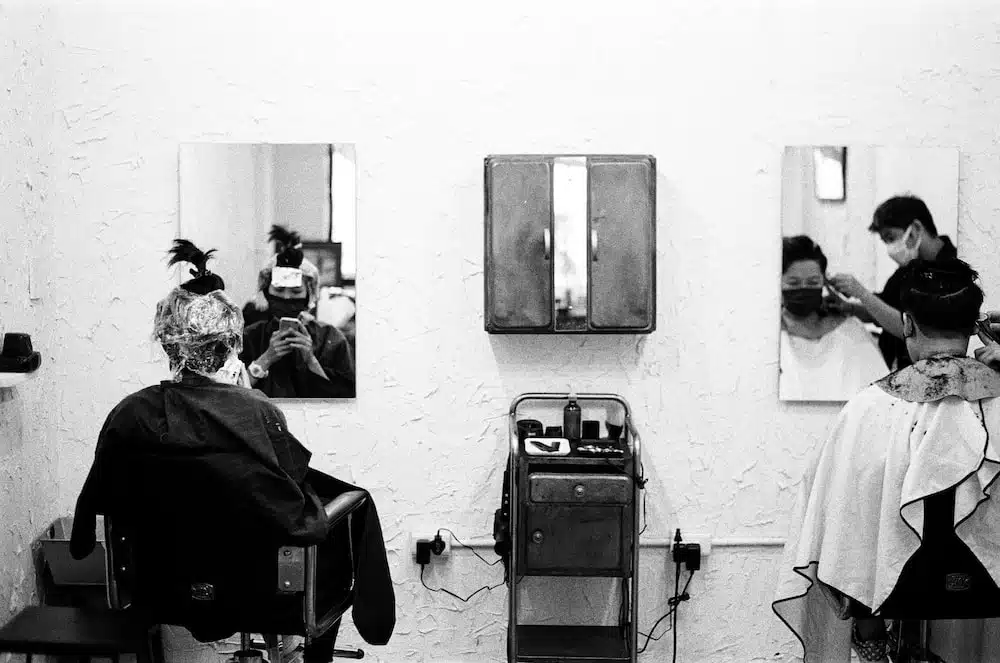
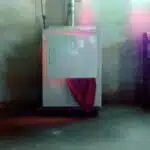
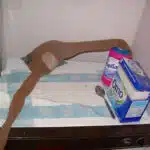
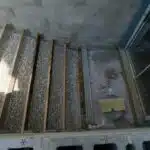

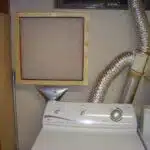


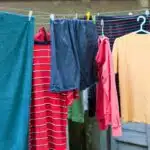


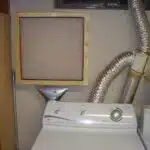


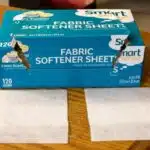

![How To Wash And Care For White Clothes 17 The only genuine borax soap cleanses hygienically saves the clothes and hands. 20 Mule-Team brand Boraxo white laundry soap [front]](https://green-life.blog/wp-content/uploads/2023/05/YDXLLCovnOjq-150x150.jpg.webp)











